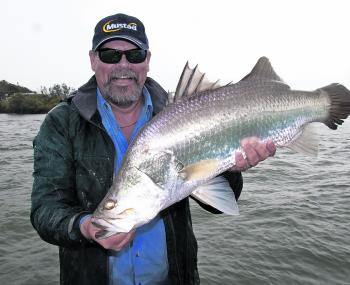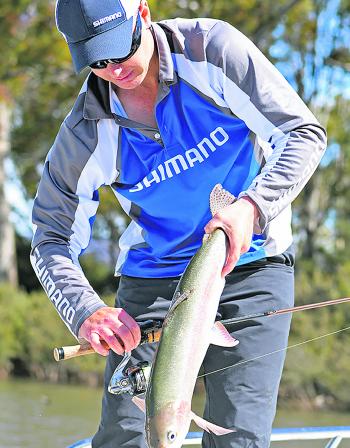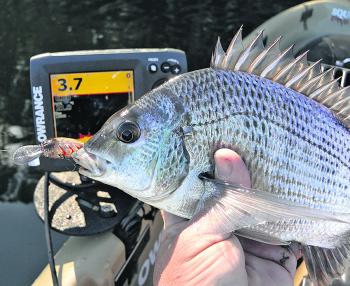Water temperature can be a key factor in dictating where fish will be found and what ‘mood’ or activity level they’re likely to be display. In other words, how ‘catch-able’ they will be. At no time of year is this more critical than in the depths of winter.
Water temperature obviously varies considerably from place to place, throughout the year and even across a day. However, compared to air, a given volume of water tends to take a relatively long time to heat up or cool down, and this property is magnified by the size and depth of that body of water. So, for example, oceans tend to be much more stable in temperature than very small ponds.
Most of the temperature sensors built into modern depth sounders measure water temperature at the sounder’s transducer, which is often submerged just a few centimetres beneath the surface. This surface temperature fluctuates more rapidly than the temperature a few metres deeper in the water column, but it’s still a good way for anglers to monitor what’s going on around them. Learning to watch the temperature readout on your sounder, or to carry a hand-held thermometer if you’re land-based, can make a big difference to your overall fishing results.
Different fish species have varying ‘preferred temperature ranges,’ as well as extreme highs and lows that can potentially prove fatal if exceeded for a certain period of time. For example, rainbow trout become lethargic and stressed if the water exceeds 22-23°C. Their ideal zone is between about 12-15°C. Exposure to water over 24°C for even a day or two will almost always kill adult rainbow trout. By contrast, barramundi tend to shut down completely when water temperatures drop below 18°C, and a cold snap that drags these temps down to the 13-14°C that trout love can result in fish kills in our stocked barra dams. While preferred temperatures for barra vary between southern and northern strains, the range from about 25-30°C is considered ideal, with a real sweet spot existing around the 28°C mark.
All that said, fish can adapt. At one end of the scale, I’ve chased barramundi and other Top End species (with at least some success) in late dry season billabongs with a tepid, bath-like surface temperature of 37°C! At the opposite extreme, I’ve pursued spawn-run trout in the Eucumbene River near the end of the season when the water was just a couple of degrees above freezing, the air was a numbing -9°C, and my line was constantly freezing onto the rod’s runners!
Having an idea of the preferred temperature range of the target species you’re chasing can be a big help when it comes to finding concentrations of those targets in a feeding mood. Even if conditions where and when you’re fishing are less than ideal, you can at least chase down spots that lean in the right direction. So, for example, if you’re hunting warmer water natives such as bass, barra, cod or yellowbelly in winter, you need to be looking for any area where the water is slightly warmer, such as along north-facing banks with lots of rock (that trap daytime heat from the sun and radiates it back into the water), or bays into which the prevailing breeze might push surface water that’s been warmed by the sun through the day. Even a lift of half a degree can sometimes spell the difference between success and failure.
Bear water temperatures in mind every time you fish, and watch my short video on finding freshwater natives in winter dams for some more clues. You can access it by scanning the QR code, or go to my ‘Starlo Gets Reel’ channel on YouTube and look for ‘Where’s The Dam Fish?’
Reads: 11210
In most areas, barramundi become much more active when the water warms above 25°C. However, in mid-winter estuaries chill to just 20°C or less, finding areas even half a degree warmer can produce the goods.

While the ‘optimum’ water temperature for rainbow trout might be 13-16°C, you can certainly catch them in both warmer and cooler waters. However, when lakes and rivers heat up in summer, it can really pay to look for cooler areas.

At the southern end of their range, snapper tend to be more ‘catch-able’ in summer, while up north, they’re traditionally a winter target. This is all about water temperature preferences.

Yellowfin bream generally prefer slightly warmer water than their southern or black bream cousins and can go a bit quiet when it’s really chilly.




